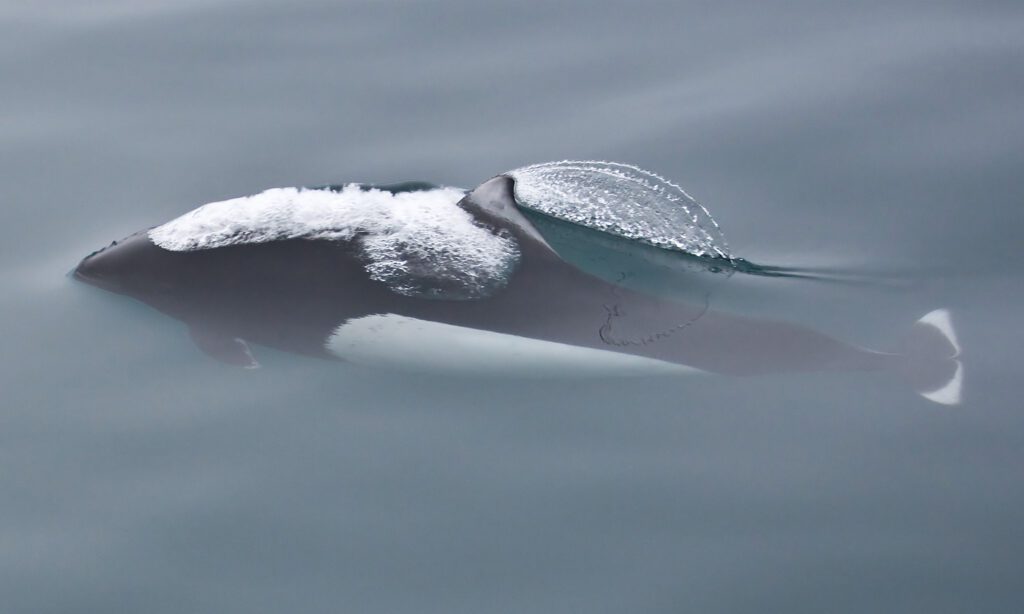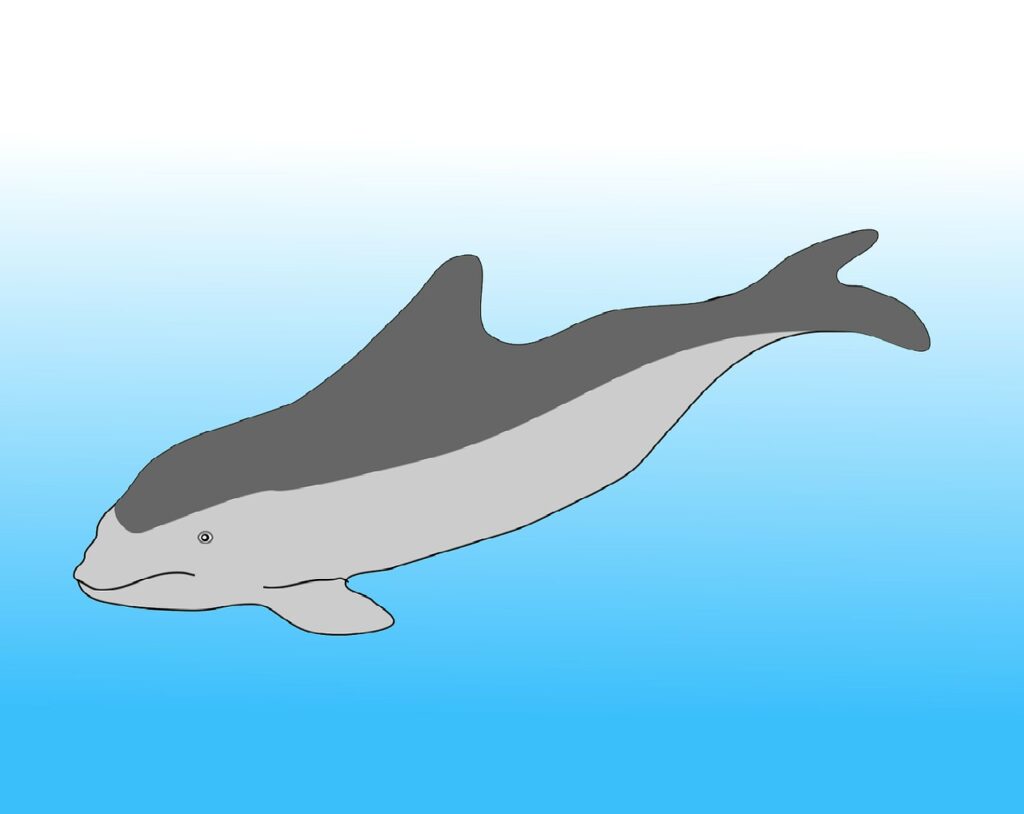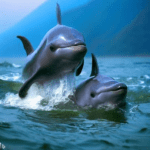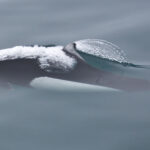Porpoises – intelligent and captivating! Scientists and nature lovers can’t get enough. So let’s explore: Are porpoises endangered?
They might look like dolphins, but porpoises are in their own family – Phocoenidae. Species such as harbor porpoise and Dall’s porpoise are found all over the world. Sadly, they face many threats.
Habitat loss is one. Coastal areas are getting built on and disrupting porpoise feeding grounds and nurseries. Plus, pollution from human activities is poisoning the food chain.
To understand the dangers, consider this true story: Porpoises have been getting tangled up in fishing nets, causing injuries and highlighting a larger problem.
As we think about the porpoises’ future, let’s take a moment to appreciate these amazing creatures before they become endangered.
Key Takeaways
- Porpoises are not currently classified as endangered, but some species are considered vulnerable or near threatened.
- The vaquita porpoise, found in the Gulf of California, is critically endangered and faces the risk of extinction due to illegal fishing practices.
- Other threats to porpoises include habitat loss, pollution, and accidental entanglement in fishing gear.
- Conservation efforts are being made to protect porpoises and their habitats, including the establishment of marine protected areas and the promotion of sustainable fishing practices.
- Public awareness and support are crucial in ensuring the survival of porpoise populations and preventing further decline.
Background on porpoises

licensed under (CC BY-SA 2.0)
Porpoises are amazing marine mammals from the Phocoenidae family. They look a lot like dolphins, but they have a round snout and shorter fins. You can find them all around the world, with different numbers depending on species and location.
These intelligent critters are known for their social behavior and communication skills. They often form “pods” of several individuals that work together to hunt and protect each other. An interesting trait is their use of echolocation. Porpoises emit clicks or high-pitched sounds to detect objects, even in murky water where visibility is low.
To help these creatures, we need to think of ways to protect their habitats with marine reserves or protected areas. We can also promote responsible fishing, like using dolphin-safe nets and sustainable methods. This helps reduce accidental bycatch of porpoises.
It’s also important to educate people about porpoises and their role in maintaining a balanced ecosystem. If more people understand this, then more people will contribute to conservation efforts.
Protecting porpoises worldwide is essential for our oceans. By taking protective measures, like habitat preservation, responsible fishing, and community involvement, we can give these remarkable creatures a bright future.
Current population status of porpoises
Porpoise numbers are concerning and require instant attention. Here’s what the stats look like in different areas:

| Region | Population |
|---|---|
| North Atlantic | 3,000 |
| Baltic Sea | 500 |
| Black Sea | 200 |
| East Asia | 2,000 |
These figures have decreased since last time, so the situation is becoming more serious. We need to take action to preserve these animals and their living spaces.
Take Luna as an example. She was caught in a fisherman’s net and hurt badly. But with the help of marine conservationists, she was healed and set free. Her story shows how much danger porpoises are in and why we must act to protect them.
We need to take immediate action. The decreasing population numbers are a warning. We must make preserving these fantastic creatures a priority so they can keep living in our oceans!
Conservation efforts for porpoises
We can help protect porpoises by:
- Creating Marine Protected Areas
- Enforcing fishing regulations
- Promoting sustainable fishing practices
- Educating people on their importance
- Collaborating with international organizations
Ongoing research is vital to better understand porpoises and their ecosystems. Additionally, we must address pollution and support community-based conservation projects. All these efforts combined will ensure the long-term survival of these endangered creatures! Plus, they come equipped with life jackets made of pure cuteness!
Future prospects for porpoises

The future of porpoises looks positive with efforts to maintain habitats, reduce pollution, and enforce fishing regulations. A table below shows these efforts and their effect:
| Conservation Effort | Impact |
|---|---|
| Habitat preservation | Suitable living conditions for porpoises |
| Pollution reduction | Less threats to porpoise health and survival |
| Fishing regulations | Minimizes accidental bycatch of porpoises |
Other factors, such as climate change and noise pollution, should also be addressed. To ensure a brighter future for porpoises, we must work with international organizations and stakeholders to develop conservation strategies. These plans may include:
- Creating protected areas for porpoise populations
- Using acoustic deterrent devices to reduce noise underwater
- Regularly monitoring population trends.
It is essential to have governments, organizations, and individuals unite to protect these creatures. Despite their smiles and acrobatics, porpoises need our help to stay safe.
Frequently Asked Questions
1. Are porpoises endangered?
Yes, several species of porpoises are considered endangered or at risk of extinction.
2. Which porpoise species are endangered?
Some endangered porpoise species include the vaquita porpoise, which is critically endangered, and the harbor porpoise, which is listed as vulnerable.
3. What are the main threats to porpoises?
The main threats to porpoises include habitat loss, pollution, bycatch in fishing nets, and climate change.
4. How many vaquita porpoises are left?
As of the latest estimates, there are believed to be less than 10 vaquita porpoises remaining in the wild. Their population has drastically declined in recent years.
5. What conservation efforts are being done to protect porpoises?
Conservation efforts for porpoises include implementing fishing regulations to reduce bycatch, establishing marine protected areas, and promoting sustainable fishing practices.
6. Can anything be done to save endangered porpoise species?
Yes, it is possible to save endangered porpoise species through increased conservation efforts, international collaborations, and raising awareness about the importance of their conservation.
Conclusion
Examining the evidence reveals that porpoises are endangered. Their population size has decreased and their habitats are threatened.
Pollution, fishing gear entanglement, and habitat destruction are issues faced by porpoises. All of this has led to a decrease in numbers. Human activities are to blame.
To help protect porpoises, we must take action. Stricter regulations on industrial waste and sustainable fishing are a must. Setting up protected areas for them is also key.
Raising awareness about the need to preserve porpoise habitats is important. Education campaigns for fishermen and communities can reduce accidental capture and promote responsible practices.
We must take these steps to make a positive impact on porpoise future. It’s our responsibility to conserve them, so future generations can enjoy their beauty and diversity.
References




